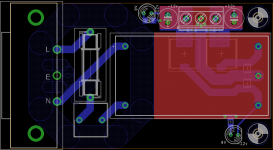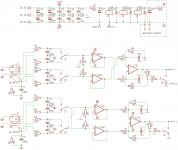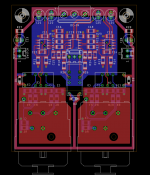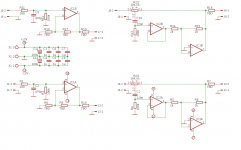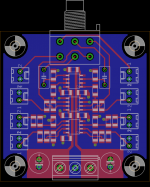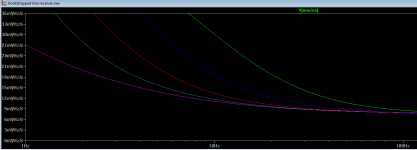I'm making some progress in the design of my next project. The idea is to build something I can fit into a galaxy gx247 (1U, 170*230mm) and which is spread around a few sub sections I can easily debug/replace/upgrade if needs be.
Sources of inspiration mostly are Self's book on small audio designs and some Hypex app notes.
The sub sections I'm planning to start with are:
- AC-DC board,
- input board,
- volume control board,
- headphones amp.
The overall design will follow like this:

AC-DC board
There really isn't much to say about it. It's just a 90*70mm adapter board for the recom 10 or 20W ac-dc dual output converters. Added on board are an IEC, fuse, connection for a mains switch and an output CLC filter. Special care has been taken for the mains clearance (8mm minimum to secondary, 4mm to PE, 4mm between primaries).
No further particular regulation is intended but I could later add a regulator board if the need is making itself clear.
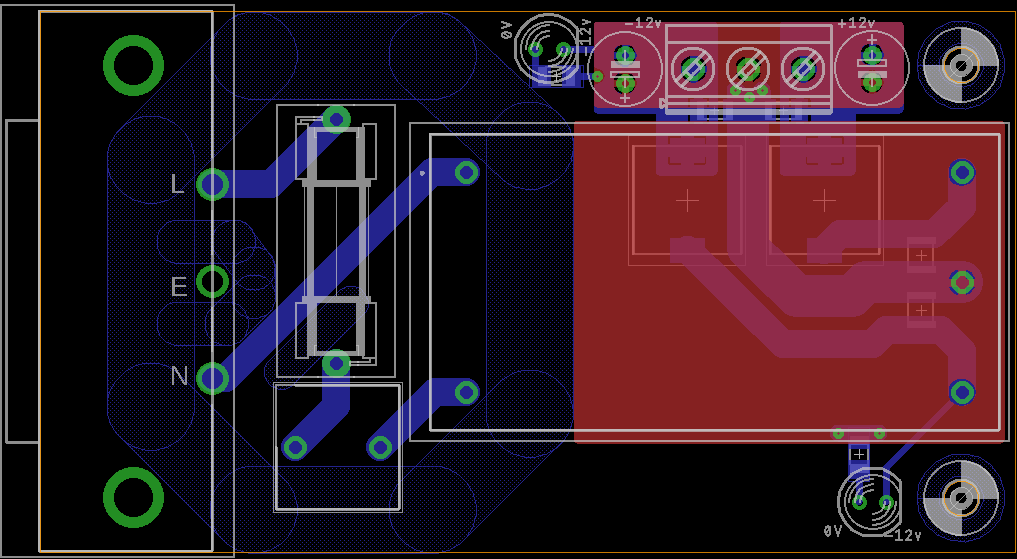
Input board
Basically it's a classical inamp. I don't particularly need multiple inputs but what I wanted is the possibility to have either balanced or SE input with minimum hassle. So I'll have combo xlr jacks, to minimize the space taken. Using relays to switch between the xlr and 1/4 jacks allows me to also switch the gain at the same time. It's at unity for balanced input, and at 6dB for SE, to account for the usual difference in levels.
I'll use opa1642 for the input buffers. They have a very strong EMI rejection ability, so it allows me to keep the external input filter minimal. For the output, the lm4562 is well suited.
At 60*70mm, it's compact enough that I could have two of these boards in the box if I ever wanted dual inputs.
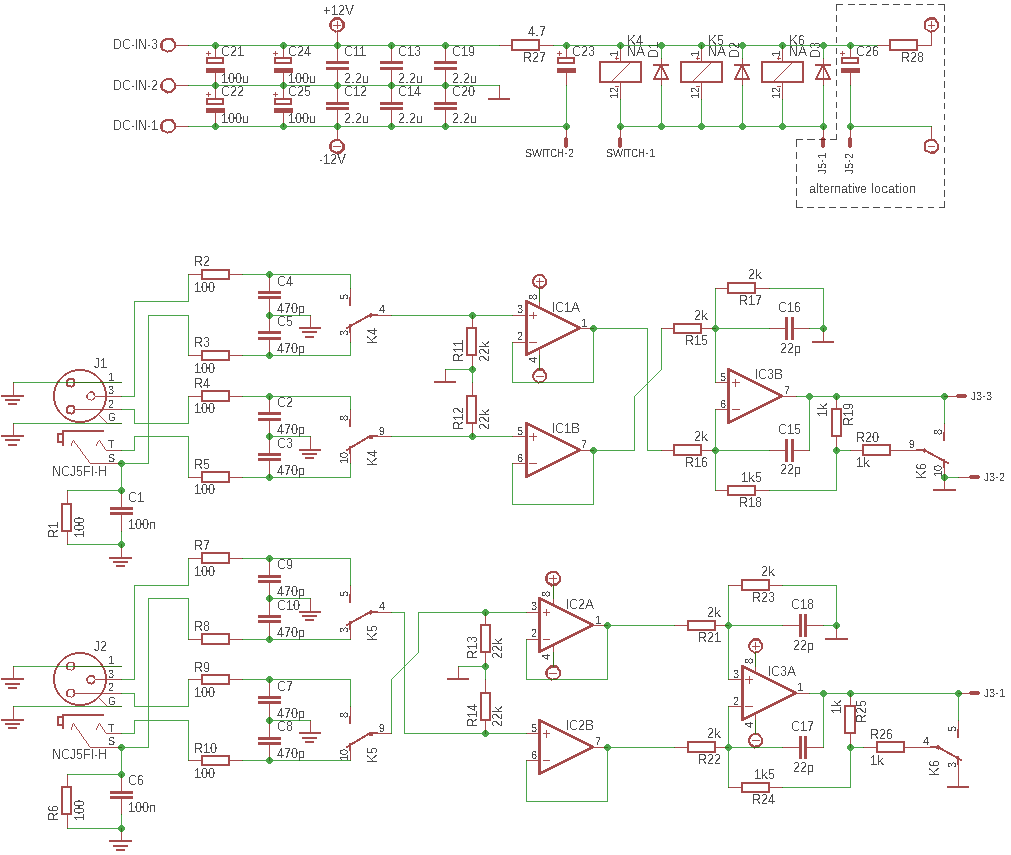
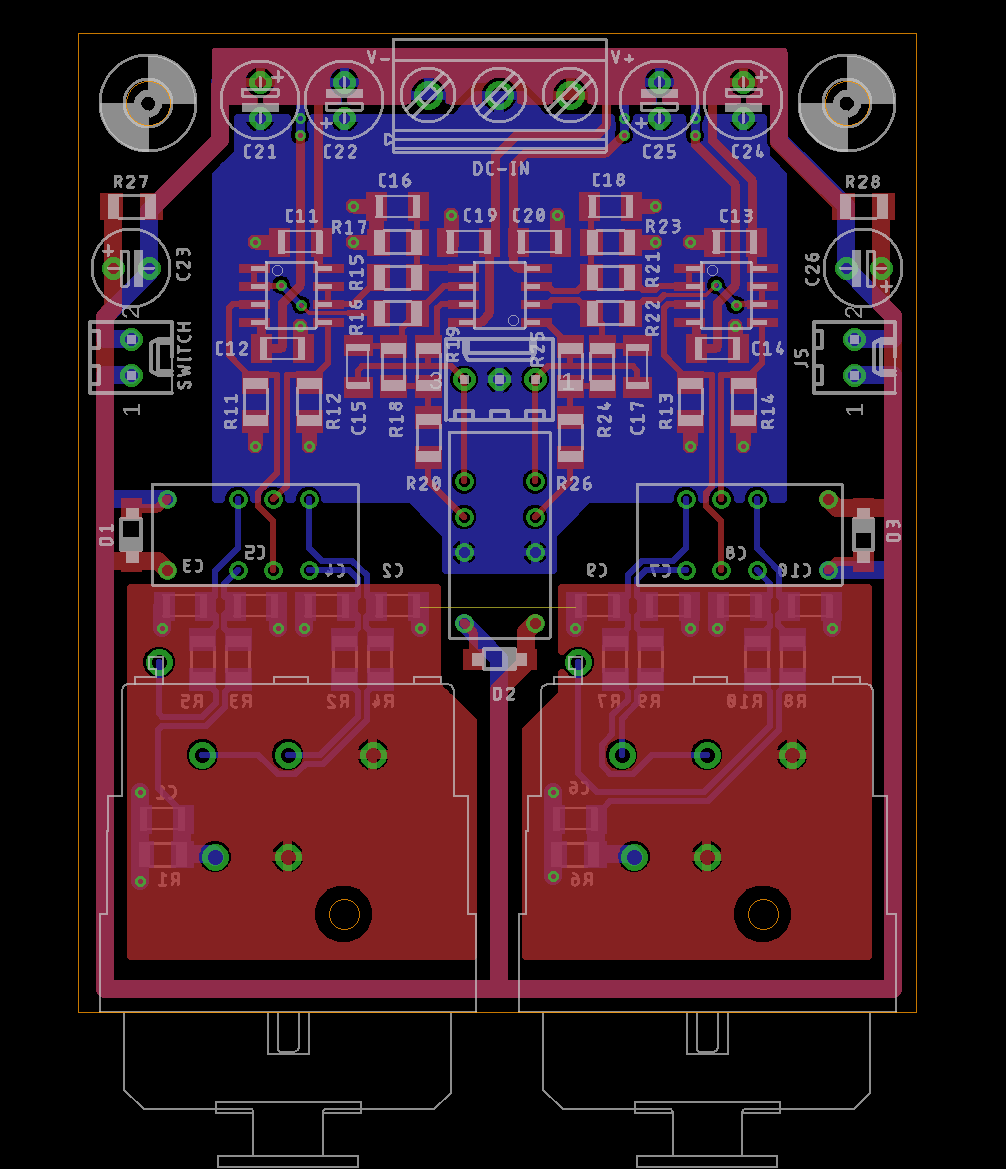
Volume control
The volume control board is a bit more complicated than necessary, a gain stage has been added so that it can be used as a stand alone preamp if needed in another project. The board dimensions stay reasonable, at 50*50mm. The pot used is the typical 17mm Bourns or Alpha. The first opamp after the wiper should be an opa1642, the inverting opamp afterwards a lm4562.
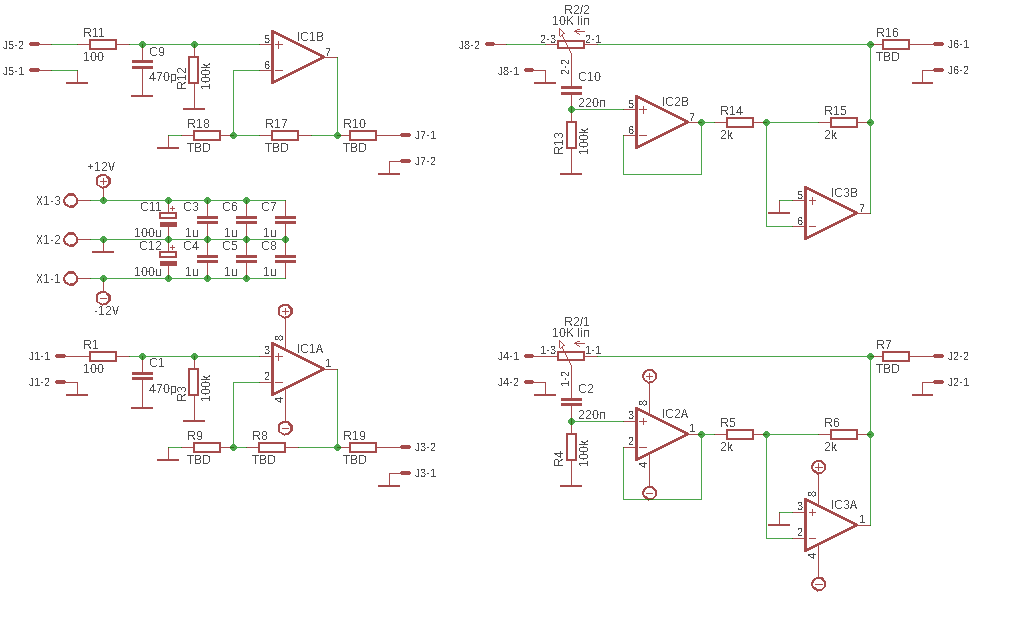
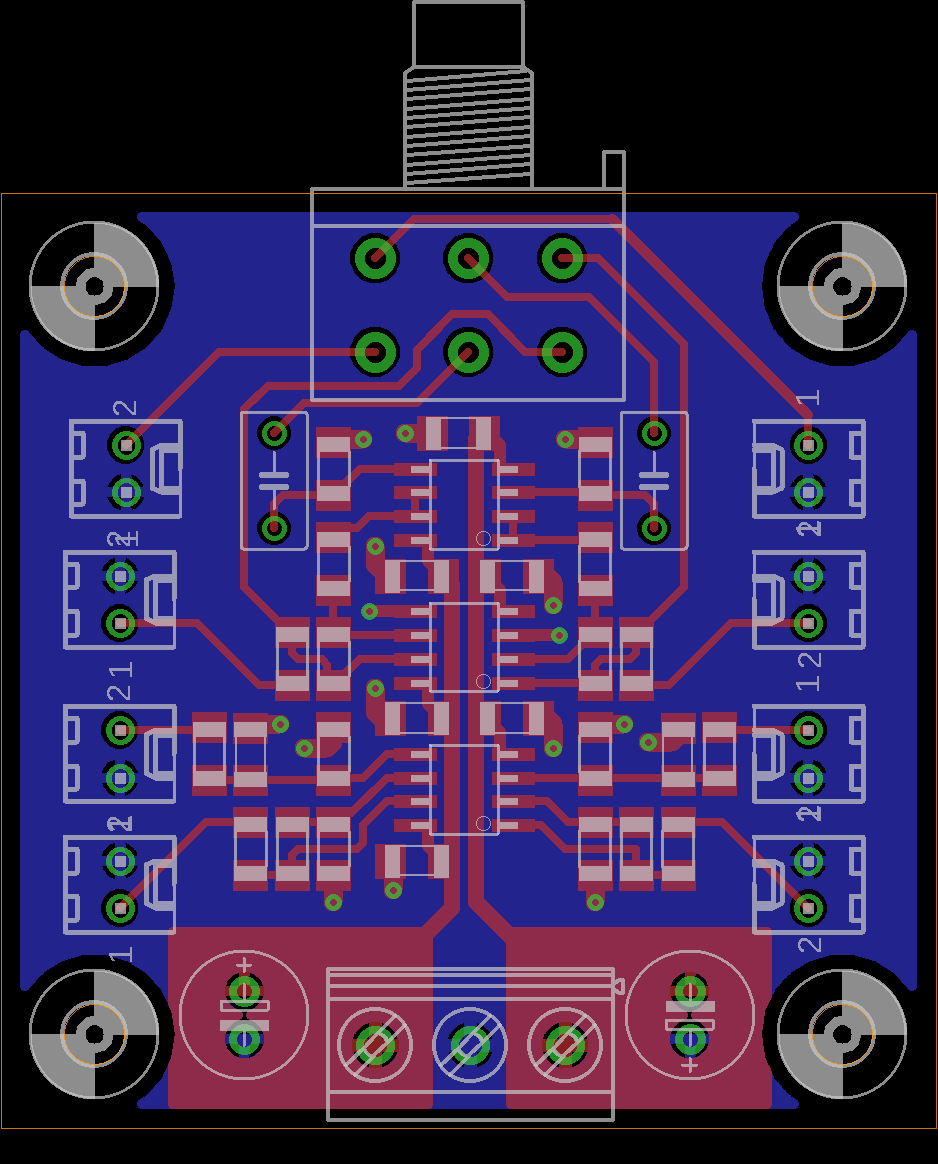
Headphones amp
To come, simple composite lm4562-opa1656.
Sources of inspiration mostly are Self's book on small audio designs and some Hypex app notes.
The sub sections I'm planning to start with are:
- AC-DC board,
- input board,
- volume control board,
- headphones amp.
The overall design will follow like this:
AC-DC board
There really isn't much to say about it. It's just a 90*70mm adapter board for the recom 10 or 20W ac-dc dual output converters. Added on board are an IEC, fuse, connection for a mains switch and an output CLC filter. Special care has been taken for the mains clearance (8mm minimum to secondary, 4mm to PE, 4mm between primaries).
No further particular regulation is intended but I could later add a regulator board if the need is making itself clear.
Input board
Basically it's a classical inamp. I don't particularly need multiple inputs but what I wanted is the possibility to have either balanced or SE input with minimum hassle. So I'll have combo xlr jacks, to minimize the space taken. Using relays to switch between the xlr and 1/4 jacks allows me to also switch the gain at the same time. It's at unity for balanced input, and at 6dB for SE, to account for the usual difference in levels.
I'll use opa1642 for the input buffers. They have a very strong EMI rejection ability, so it allows me to keep the external input filter minimal. For the output, the lm4562 is well suited.
At 60*70mm, it's compact enough that I could have two of these boards in the box if I ever wanted dual inputs.
Volume control
The volume control board is a bit more complicated than necessary, a gain stage has been added so that it can be used as a stand alone preamp if needed in another project. The board dimensions stay reasonable, at 50*50mm. The pot used is the typical 17mm Bourns or Alpha. The first opamp after the wiper should be an opa1642, the inverting opamp afterwards a lm4562.
Headphones amp
To come, simple composite lm4562-opa1656.
Attachments
Last edited:
An inverting volume control wasn't exactly a hit with owners of the Musical Fidelity A1 in the long run... it's like a loupe for scratchy pots. You have been warned.
(Also, the measly 220n coupling cap may negatively impact noise performance in the bass.)
(Also, the measly 220n coupling cap may negatively impact noise performance in the bass.)
Wasn't the problem with the A1 that the wiper carried DC as the pot was used in a trimmer fashion ? The classical Baxandall as used here doesn't suffer of this, due to the cap.
I can increase quite easily the cap's value, there's room enough.
I can increase quite easily the cap's value, there's room enough.

